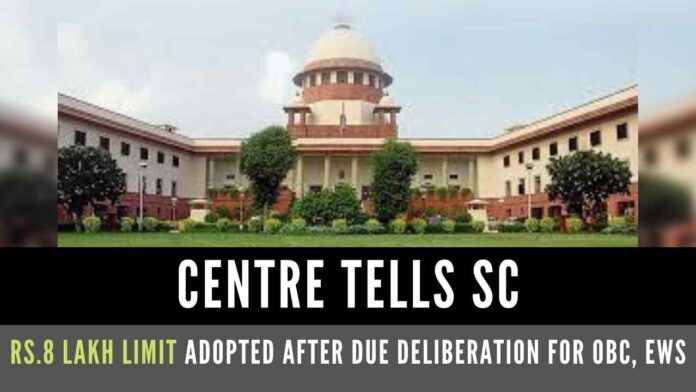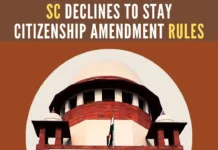
Can’t just pull Rs.8 lakh limit for EWS quota out of thin air’: SC to Centre
Pursuant to the Supreme Court‘s order asking the Centre to apprise the Court of the reasons for its decision to adopt the criteria of the annual income of Rs.8 lakhs for determining the eligibility for Economic Weaker Sections (EWS) in the NEET All India Quota, the Central Government today filed an affidavit justifying its stand.
The Centre has told the Supreme Court that its decision to fix the Rs.8 lakh income limit for OBCs and the EWS is not arbitrary in the NEET All India Quota and it was finalized after considering diverse economic factors in different states.
The Union Ministry of Social Justice and Empowerment, in an affidavit filed in the top court, said Rs.8 lakh as a criterion for determination of EWS and determination of the “creamy layer” in the OBC category is rational and in keeping with Articles 14, 15, and 16 of the Constitution.
The exercise conducted to determine the creamy layer for the purpose of OBC reservation would be equally applicable for the determination of the EWS category. The fundamental premise is that if a person/ family has a substantial economic standing, he/ she may not require the benefits of reservation at the “cost of others”.
The affidavit cites the Major General Sinho Commission report.
The affidavit added that the determination of the Rs.8 lakh income limit was arrived at after taking into consideration the diverse economic factors in different states. The diverse economic status between rural and urban areas was also taken into consideration.
The Centre emphasized that there is a difference in purchasing power between rural and urban areas in the sections which are intended to be under EWS reservation – namely students in higher educational institutions. There is also a constant employment migration from rural to urban areas.
“Therefore, in view of the above, no separate criterion has been fixed for the rural and urban areas…The determination has to be made on broad probabilities and it is impossible to achieve perfection/ mathematical precision,” said the affidavit.
The Centre pointed out that even if it takes the cost of living within the city, it varies and if a state is taken, the cost of living varies in its different parts.
“In such circumstances, the broad criteria as applicable to the country alone has to be taken into consideration,” it said.
The affidavit said to ensure the provision of reservation in terms of 103rd Constitutional Amendment would not prove to the detriment of other general category students, since the number of seats has been drastically increased by 56 percent in last year for MBBS and 80 percent for postgraduate.
On October 21, the top court had questioned the Centre over adopting the criteria of OBC creamy layer of Rs.8 lakh annual income for granting reservations under the EWS, despite the latter not suffering from social and educational backwardness.
“You just cannot pull out eight lakh from thin air. You are making unequal equal by applying the Rs.8 lakh limit,” a bench headed by Justice D Y Chandrachud told the Centre’s counsel.
The bench noted that for OBCs, people who are below the Rs.8 lakh annual income, suffer from social and educational backwardness. It added: “Under the constitutional scheme, the EWS category is not socially and educationally backward.”
The Centre’s response came on writ petitions challenging 27 percent reservation for OBCs and 10 percent reservation for EWS in all-India Quota seats for postgraduate medical courses. As many as 15 percent seats in MBBS and 50 percent seats in MS and MD courses are filled through All India Quota from the candidates selected through NEET.
[With Inputs from IANS]
PGurus is now on Telegram. Click here to join our channel and stay updated with all the latest news and views
For all the latest updates, download PGurus App.










